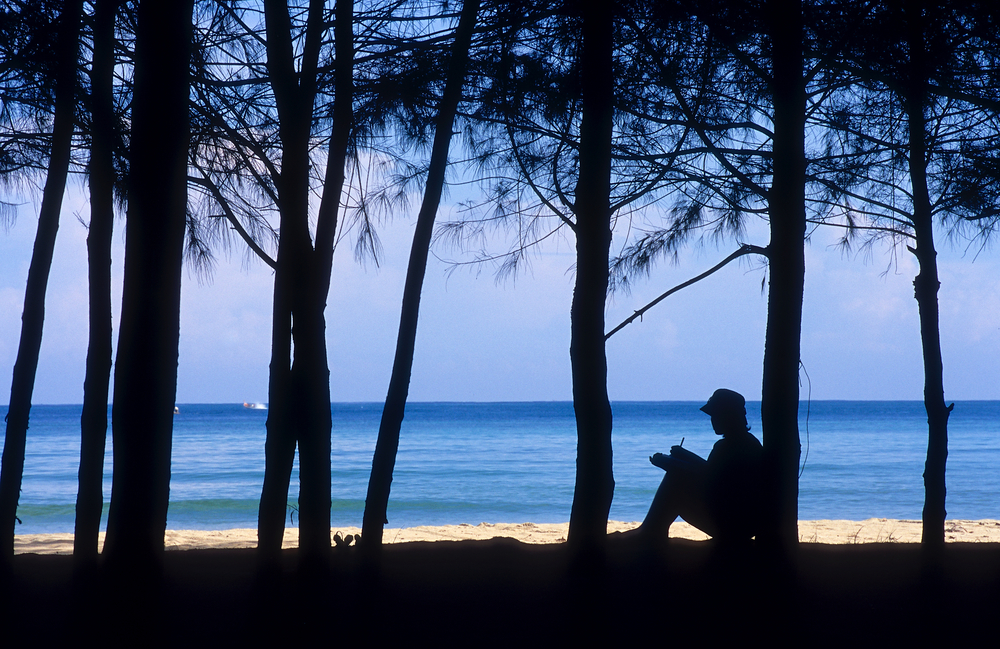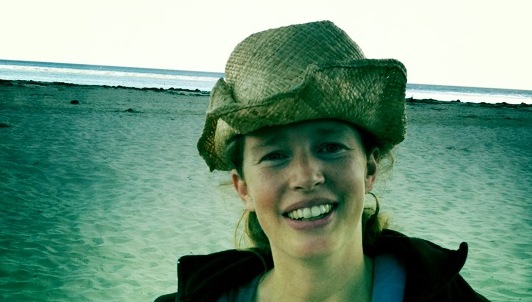
People tell me that I write essays. I think they’re probably right—except that I’ve never been exactly sure what an essay is. When I think essay, I think five plodding paragraphs about the use of light as a symbol in The Scarlet Letter. Or I imagine much more experienced, serious writers picking up their pens, like Michel de Montaigne, the 16th-century Frenchman who spent most of his career honing some of the earliest examples of the form. Or at least someone who took things like rhetoric and comp. lit. in college.
So I asked other writers and editors for their thoughts about what essays are, and what makes good ones work. One of my favorite descriptions of the form comes from Janet Hopson, a co-founder of Outside and the inaugural columnist of the magazine’s Natural Acts column. In some ways, she says, the lines are blurry between essays and feature stories. Both can educate, entertain, inform, inspire. Some features include the writer’s own experience, use lyrical language, or support an argument; an essay can brim with facts, quote other people, and the first-person writer can vanish behind a screen of words.
The underlying structure, Hopson says, is what separates the two. In an essay, the writer directs the movement from idea to idea; a feature’s structure comes from its subject. “An essay can have just as much factual information, but it’s based around this unique, personal, internal logic,” says Hopson, who teaches a science essay course to graduate students in the University of California, Santa Cruz’s Science Communication program.
Bringing this personal, internal logic to an idea can open up previously unexplored territory for readers—and for writers as well. For those already writing about science, an essay can be a way of stepping into an unfamiliar field, whether it’s fluid dynamics or immunology, and exploring the most personally compelling facets.
Essays are, in fact, what got Richard Panek, a journalist and fiction writer, into writing about science. An editor proposed a book about the history of the telescope; when he balked, she suggested he imagine the project as a long essay. “Then I was able to think of it in a personal way. I could focus where it was interesting to me,” he says.
Starting Out
Because essays seem quieter to me than full-throttle features, I sometimes think that I need to grab a reader’s interest by starting smack in the middle of action. But sometimes, when I’m trying to start out an essay, I’m not sure yet where the action is. Panek, co-author of The Autistic Brain, spends a lot of time thinking about beginnings, too. Recently he realized that you don’t necessarily need to start out in media res “because the moment that you start to put something down on paper, the reader is already interested in what came before.”
The beginning of Belle Boggs’ lovely essay “The Art of Waiting” does just that. “It’s spring when I realize that I may never have children,” she writes, “and around that time the thirteen-year cicadas return, burrowing out of neat, round holes in the ground to shed their larval shells, sprout wings, and fly to the treetops, filling the air with the sound of their singular purpose: reproduction.” This first sentence leaves the reader wondering what’s brought the narrator to this moment. And with it, Boggs also sets up the essay’s broader sweep of reproduction across the animal kingdom, from reproductive submission in cooperative marmoset communities to Jamani, a pregnant gorilla that is part of a captive breeding program at the North Carolina Zoo.
Making a Change
What’s also evident in this essay is the writer’s subtle transformation. Boggs contemplates some counterpoints—from a female gorilla on birth control pills to Virginia Woolf, who wrote on one occasion that the thrill of writing well surpassed her longtime desire for children—near the essay’s end. Then in the final graphs, Boggs notes that the cicadas have stopped singing. “The silence is startling at first—I step outside each morning expecting to hear that seashell sound—but it’s also a relief. I wait for some other wave,” she writes.
Transformation is critical to the success of a personal essay, says Evelyn Strauss, a writer and editor who teaches the UCSC essay course in alternating years. Without change, she says, an essay is just something that happened, a topic instead of a story. Change can come through earth-shattering revelation—or, as Boggs shows, through quiet, even tentative steps. Whether big or small, a writer can structure an essay by starting with a problem or question, explaining how it came about, and then calling out the different points that highlight gradual evolution. Strauss says readers keep reading because of the dramatic tension: How will this problem be resolved?
But say you want to write an essay about something and you don’t yet know how transformation fits into your topic. Strauss suggests exploring what’s drawn you to the idea, rambling around what associations you bring to it, and seeing what bubbles up from there.
A writer can also create the tension and release that the arc of transformation brings, without getting too personal. If you can ratchet up the drama—setting up a problem, and making the essay the movement toward a solution—a reader will remain interested. In “Vortex,” an essay that appears in the book Wild Thoughts from Wild Places, writer David Quammen starts out in a bit of a fix: he’s stuck upside down in a “hole,” a churning river feature. What follows is a deep exploration of these holes’ properties and how fluids move. It’s not normally light reading, but it pulls the reader along with a growing understanding of Quammen’s predicament.
Pay (No) Attention to that Man Behind the Curtain
It’s sometimes shocking to suddenly have the freedom to insert yourself into an essay, particularly when you’re used to keeping yourself out of the story in traditional news pieces. But a writer’s presence in the essay can both provide an arc to the essay and guide the reader’s journey through a particular subject.
Writer David Rains Wallace usually uses first-person to some degree in both his essays for Bay Nature and his books, which he considers extended essays. “I like to have a personal relationship with my subject,” he says. “I like to make it pretty clear… who’s behind what I write, to the extent one can be clear about who one is.”
No matter how much a writer reveals himself, he has to find a way to make his experience resonate with others. High Country News contributing editor Michelle Nijhuis, who edits essays for the biweekly, looks for writers who can get journalistic distance on themselves. “No matter how long you’ve been doing it, it’s easy to get lost in your own experience,” she says. She points to a successful essay about two women getting married in rural Washington. Although it’s the story of one couple, the writer bridges the personal and the universal, relating not only a special wedding day but the joys and challenges faced by anyone getting married, along with insights into life in the rural West.
Combining the personal and the universal in an essay that’s about science can give readers a more intimate connection to science and its process, a connection that’s often hard to create in a news story, or even a feature. In a post at The Last Word On Nothing, Panek begins by explaining that his father was older than the universe—older, anyway, than when Edwin Hubble confirmed that there were galaxies beyond our own and gave the world a glimpse into the vastness of the universe. Panek chronicles further discoveries about the universe alongside the enjoyment he had in sharing the unfolding universe with his father. The post, along with being a tribute to a unique man, connects a reader (this reader, anyway) both inward and outward—with my own father, and our own universe.
Even without including direct personal experience in an essay, a writer’s fingerprints are un-erasable. The way a writer moves from idea to idea and the detours and tangents that draw her attention make each essay unique. And all of this is wrapped in a writer’s voice—everything from her word choice to the way she shapes her dialogue. Nijhuis is always looking for compelling voices. “That’s the thing that, as an editor, you can’t fix,” she says. “The voice has to come from the writer’s personality and the writer’s experience.”
One of these unmistakable voices comes from Amy Leach, who writes about science and nature in essays that are lyrical, funny, and oddly touching. Her essay “Sail On, My Little Honeybee” (which later appeared in the 2009 edition of Best American Essays), never uses first-person, but the writer is unmistakably present in this exploration of the moon’s place in our sky. Here’s an example: “For an idea of how long your light takes to reach Earth, sing one line from a song, such as ‘Sail on, my little honey bee,’ and that is how long moonlight takes…As for the Sun, he should sing as lustily as sunlight; have him discharge the song ‘I Gave Her Cakes and I Gave Her Ale,’ which is eight minutes long, which is how long sunlight takes to reach the Earth.”
If you compare this to another of her essays, such as “Warbler Delight,” you’ll see the same use of slightly gilded language with terrific images, a sprinkling of wild fantasy that gets at a greater truth, and a tone that’s both authoritative and impressionable.
Voice Lessons
There are two things that the essay writers I talked with suggested: more reading and more writing. Essay collections like the Best American series, that draw from a wide range of venues (whether literary journal, blog, or science magazine), can give a reader examples of structure, voice, and other craft elements. Finding a reason to do regular essay-writing—whether a personal blog or even a deadline with another writer—can move essays from vague ideas to words on the page.
Even when you’re not working on essays, “you can take the opportunity in almost any kind of nonfiction writing to amp up your own voice,” Hopson says. “It doesn’t leave you, once you create a strong, personalized voice as a writer. It just winds up in things.”
A long time ago, in that same high school English class where I struggled to say something interesting about The Scarlet Letter, I learned that the word essay comes from a French word which means “to try.” And perhaps the unspoken corollary: sometimes, to fail. But when a writer succeeds, an essay feels that much more satisfying, because that precipice is always hovering there in the background. When a writer leaps, and lands safely and gracefully, all I can do is applaud.

Cameron Walker writes about science, travel, and curiosities of the Pacific coast. Her essays have appeared in High Country News and The Last Word On Nothing.


